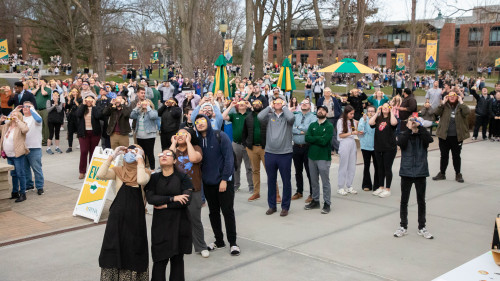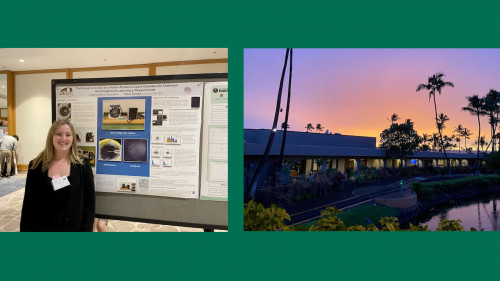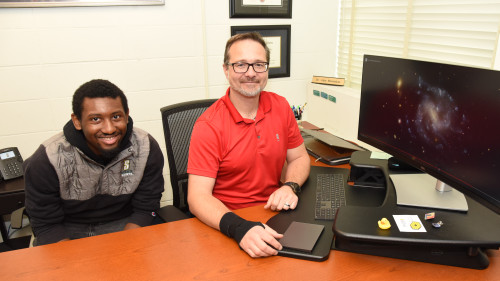
Siena’s Physics Department was well represented at the April meeting of the American Physical Society (APS).
Six Saints and Matt Bellis, Ph.D., associate professor of physics, attended the Sacramento conference; all of the students presented their work in poster sessions.
“They did such an amazing job, and received incredibly positive feedback from fellow students and senior researchers alike,” said Bellis. “The meeting is very undergrad-friendly – the APS makes a point to welcome undergraduates, and some sessions and panels are geared specifically to them. It’s also an excellent way for them to explore options for graduate school and jobs, and to network with some of the 1,000 physicists who attend.”
Five of the Siena students presented work they did with Bellis: Enzo Morina '24, Josie Swann '25, Jillian Cola '25, Mirnelle Mathurin '25, and Samyak Tuladhar '26. Sarah Markham '24 also attended and presented work she did with Rose Finn, Ph.D. professor of physics and astronomy.
“This experience was amazing as it allowed me to both present work that I’ve put a ton of effort into and also make connections with different people,” said Markham (below, left). “I learned so much about a bunch of different aspects of physics/astronomy and was able to meet people like myself in the field, which really makes me feel as though I'm a part of the community.”
Swann said her biggest takeaway was the importance of presenting research to people with similar interests.
“It’s an awesome feeling when other people feel as enthusiastic as you do about your research,” she said.
Mathurin is the first Siena STEM Scholar and the work she presented – the development of novel lab equipment for introductory physics labs – was done as part of that program.
"The APS conference was a great opportunity to network and meet individuals with similar interests," said Mathurin. "I was also able to learn about others' research!"
The April 3-6 meeting focused on particle physics and astrophysics, while also leaving space for important sessions about education and DEI in the physics community. Students got to hear about the latest research in these arenas, including the most recent Dark Energy Spectroscopic Instrument (DESI) work from Siena professor John Moustakas, Ph.D. and his collaborators, presented at a plenary session. The event encompassed a broad range of physics research, including astrophysics, particle physics, nuclear physics, and gravitation.
There are always fortuitous meetups at academic conferences. Bellis explained that Tuladhar is from Nepal and during the meeting, they attended a talk by Nepali physicist Suyog Shrestha on "Taking High Energy Physics to Higher Altitudes" about his work bringing particle physics research from CERN to students in Nepal. It turned out that Shrestha, who teaches in Maryland, knew all about Siena College and its work with students at CERN, which he had read about it in Symmetry magazine.
The work conducted by Bellis and his students was supported by a combination of his National Science Foundation grant and funding from Siena’s Center for Undergraduate Research and Creative Activity (CURCA) funding.

